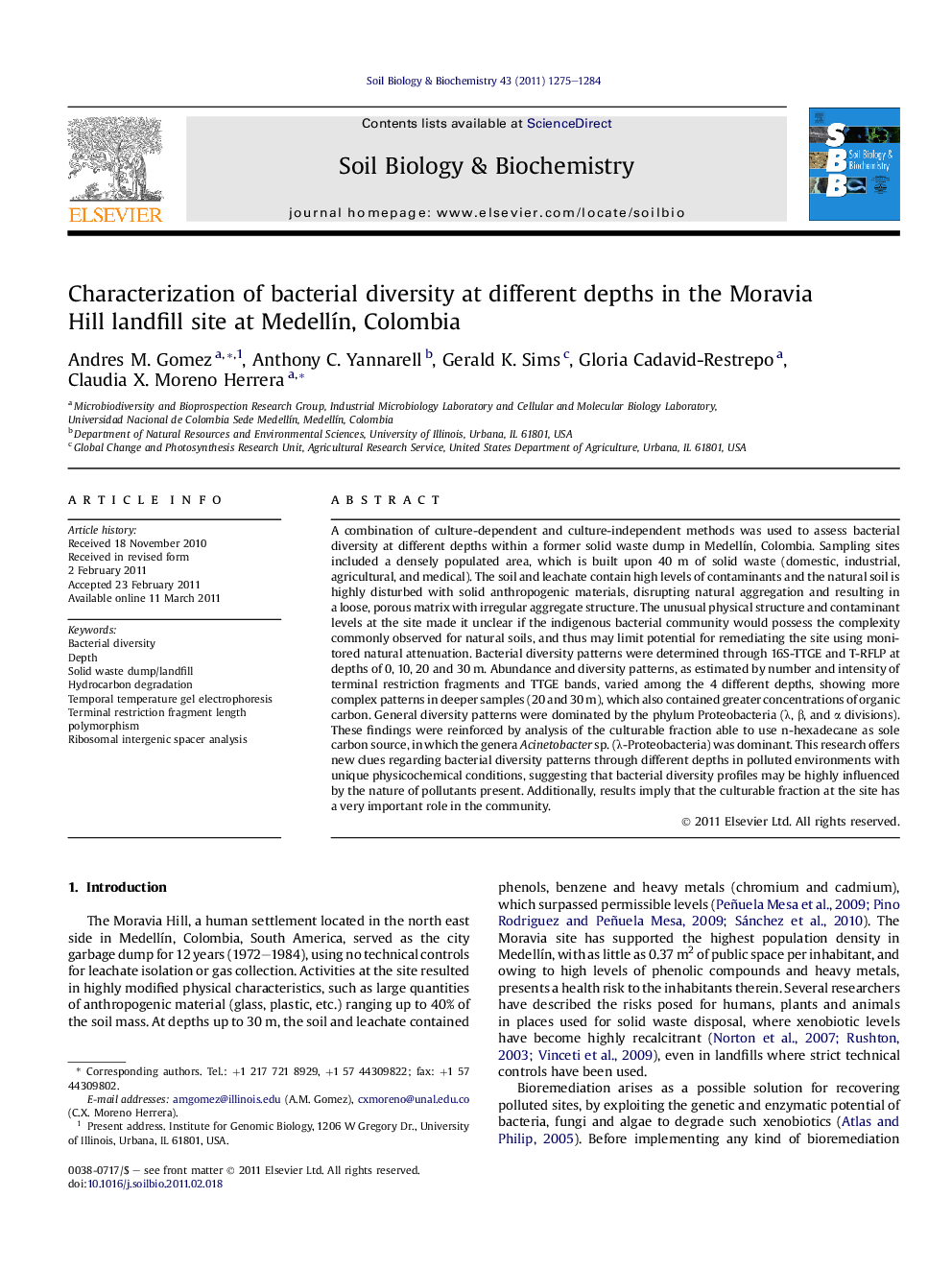| Article ID | Journal | Published Year | Pages | File Type |
|---|---|---|---|---|
| 2025304 | Soil Biology and Biochemistry | 2011 | 10 Pages |
A combination of culture-dependent and culture-independent methods was used to assess bacterial diversity at different depths within a former solid waste dump in Medellín, Colombia. Sampling sites included a densely populated area, which is built upon 40 m of solid waste (domestic, industrial, agricultural, and medical). The soil and leachate contain high levels of contaminants and the natural soil is highly disturbed with solid anthropogenic materials, disrupting natural aggregation and resulting in a loose, porous matrix with irregular aggregate structure. The unusual physical structure and contaminant levels at the site made it unclear if the indigenous bacterial community would possess the complexity commonly observed for natural soils, and thus may limit potential for remediating the site using monitored natural attenuation. Bacterial diversity patterns were determined through 16S-TTGE and T-RFLP at depths of 0, 10, 20 and 30 m. Abundance and diversity patterns, as estimated by number and intensity of terminal restriction fragments and TTGE bands, varied among the 4 different depths, showing more complex patterns in deeper samples (20 and 30 m), which also contained greater concentrations of organic carbon. General diversity patterns were dominated by the phylum Proteobacteria (λ, β, and α divisions). These findings were reinforced by analysis of the culturable fraction able to use n-hexadecane as sole carbon source, in which the genera Acinetobacter sp. (λ-Proteobacteria) was dominant. This research offers new clues regarding bacterial diversity patterns through different depths in polluted environments with unique physicochemical conditions, suggesting that bacterial diversity profiles may be highly influenced by the nature of pollutants present. Additionally, results imply that the culturable fraction at the site has a very important role in the community.
► Bacterial diversity was determined in a former landfill at 0, 10, 20 and 30 m. ► Carbon content, [DNA] and diversity and abundance patterns were greater at depth. ► Members of Proteobacteria appear as dominant groups through the 4 depths, up to 30 m. ► Readily culturable bacteria appeared to have a very important role in this ecosystem.
